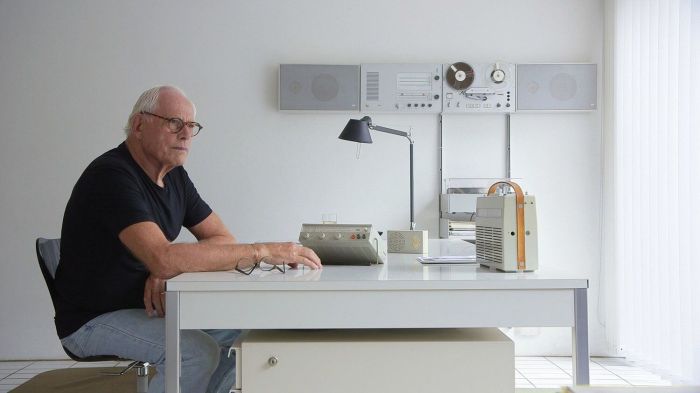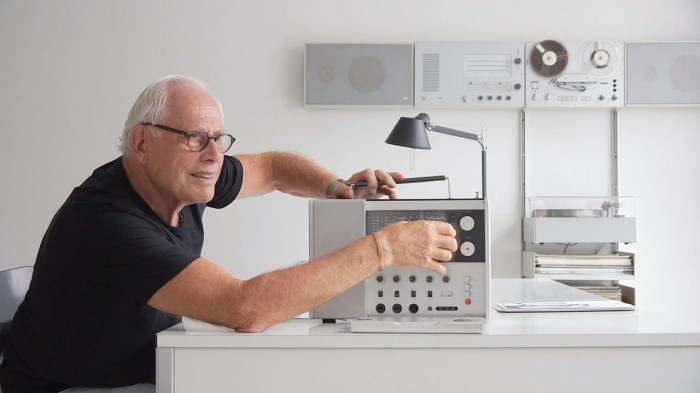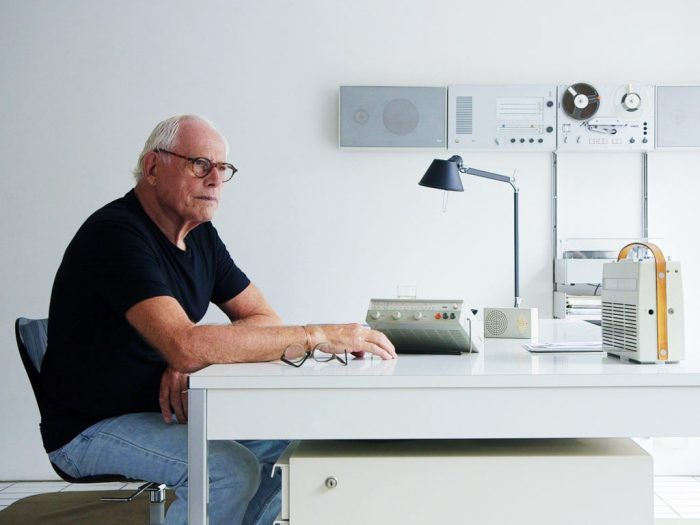Exploring the Impact of Dieter Rams in Modern Design
Diving into the world of design, Dieter Rams emerges as a visionary figure whose influence continues to shape the way we perceive and interact with products. From his groundbreaking principles to iconic creations, this overview delves into the lasting legacy of Dieter Rams in the design realm.
In the following paragraphs, we will explore his career, design philosophy, iconic products, and his profound influence on contemporary designers.
Dieter Rams Background

Dieter Rams is a renowned German industrial designer known for his innovative work at Braun and his influential design principles. Throughout his career, Rams has made significant contributions to the design world, shaping modern design trends and inspiring countless designers.
Rams’ Design Philosophy and Principles
Dieter Rams is famous for his ten principles of good design, which emphasize simplicity, functionality, and timeless aesthetics. His belief in "less but better" design approach has had a profound impact on the design industry, emphasizing the importance of user-centered design and sustainability.
- Rams' designs prioritize functionality and usability over unnecessary embellishments, focusing on the essential elements that enhance the user experience.
- His minimalist aesthetic and attention to detail have influenced a wide range of products, from electronics to furniture, encouraging designers to create products that are both visually appealing and practical.
- Rams' emphasis on sustainability and longevity in design has set a standard for environmentally conscious practices, pushing designers to consider the long-term impact of their creations.
Rams’ Impact on Modern Design Trends
Dieter Rams' work continues to shape modern design trends, with many designers and companies drawing inspiration from his timeless designs and principles.
- His focus on simplicity and functionality has led to the rise of minimalist design in various industries, influencing everything from technology products to interior design.
- Rams' sustainable design approach has sparked a movement towards eco-friendly and durable products, reflecting a growing awareness of environmental concerns in the design community.
- By advocating for user-centered design and the elimination of unnecessary features, Rams has encouraged a shift towards more intuitive and user-friendly products that prioritize the user experience.
Ten Principles of Good Design

Dieter Rams, a renowned industrial designer, established ten principles of good design that have shaped the way products are created and perceived. These principles emphasize functionality, simplicity, and timelessness in design, setting a standard for excellence in the industry.
Innovative
Good design is innovative. It pushes boundaries and introduces new solutions to existing problems. Products like the iPod by Apple revolutionized the way we listen to music by combining technology and user experience in a sleek design.
Useful
Good design makes a product useful. It focuses on fulfilling a purpose and enhancing the user's experience. The Swiss Army Knife is a classic example of a product that serves multiple functions efficiently and elegantly.
Aesthetic
Good design is aesthetic. It goes beyond functionality to evoke an emotional response and create a sense of harmony. The Eames Lounge Chair is not only comfortable but also visually pleasing, blending form and function seamlessly.
Understandable
Good design is understandable. It communicates its purpose clearly and intuitively, making it easy for users to interact with the product. The Braun ET66 calculator, with its minimalist design and logical layout, exemplifies this principle.
Unobtrusive
Good design is unobtrusive. It does not distract or overwhelm but instead integrates seamlessly into the user's life. The Sonos One speaker, with its discreet appearance and high-quality sound, exemplifies this principle.
Honest
Good design is honest
Long-lasting
Good design is long-lasting. It transcends trends and remains relevant over time, reducing waste and promoting sustainability. The Leica M series cameras have maintained their iconic design for decades, proving the longevity of good design.
Thorough
Good design is thorough in its attention to detail, ensuring every aspect is carefully considered and refined. The Dieter Rams' 606 Universal Shelving System demonstrates meticulous planning and precision in its modular design.
Environmentally Friendly
Good design is environmentally friendly. It minimizes the impact on the environment throughout its lifecycle, from production to disposal. The Tesla Model S, with its electric powertrain and sustainable materials, embodies this principle.
Minimalist
Good design is minimalist. It eliminates unnecessary elements and focuses on the essential, creating a sense of clarity and simplicity. The Muji CD Player exemplifies minimalist design with its clean lines and functional features.
Product Design Legacy

Dieter Rams' product design legacy is defined by his creation of iconic products that have stood the test of time. His minimalist approach and focus on functionality have revolutionized the way we perceive product design, influencing generations of designers to come.
Iconic Products
Some of the most iconic products designed by Dieter Rams include the Braun SK 4 record player, the Braun T3 pocket radio, and the Vitsoe 606 shelving system. These products are characterized by their clean lines, simple shapes, and timeless aesthetics.
Timeless Characteristics
Rams' designs are timeless and enduring due to their simplicity, functionality, and attention to detail. His use of neutral colors, high-quality materials, and intuitive user interfaces ensure that his products remain relevant and desirable even decades after their creation.
Minimalist Revolution
Dieter Rams' minimalist approach to product design revolutionized the industry by emphasizing the importance of simplicity, sustainability, and user-centered design. His famous ten principles of good design, such as "good design is innovative" and "good design is as little design as possible," have become guiding principles for designers worldwide.
Influence on Contemporary Designers
Dieter Rams' principles of good design have had a profound impact on contemporary designers, shaping the way they approach design and functionality. His minimalist and user-centric approach continues to inspire designers around the world.
Jonathan Ive
Jonathan Ive, the former Chief Design Officer of Apple, is one of the most prominent designers influenced by Dieter Rams. Ive's design philosophy at Apple echoes Rams' emphasis on simplicity, functionality, and timelessness. Both designers prioritize user experience and strive to create products that are intuitive and visually appealing.
- Ive's work at Apple reflects Rams' principle of "Good design is as little design as possible," focusing on eliminating unnecessary elements and creating sleek, minimalist products.
- While Rams' designs were often characterized by neutral colors and clean lines, Ive introduced bold colors and innovative materials into Apple's product lineup, but still maintained a sense of simplicity and elegance.
Naoto Fukasawa
Naoto Fukasawa, a Japanese industrial designer known for his work with Muji, has also been influenced by Dieter Rams' design principles. Fukasawa's designs prioritize simplicity, usability, and emotional connection with the user, mirroring Rams' approach to design.
- Fukasawa's "Without Thought" design philosophy resonates with Rams' principle of "Good design is thorough down to the last detail," emphasizing the importance of considering every aspect of a product's design.
- Both designers focus on creating products that enhance the user's daily life through thoughtful and intuitive design, ensuring that functionality is not compromised by aesthetics.
Legacy in New Designers
Dieter Rams' design legacy continues to shape the work of new designers who value simplicity, functionality, and sustainability in their creations. His principles serve as a guiding light for the next generation of designers, inspiring them to prioritize user experience and ethical design practices.
- Many emerging designers embrace Rams' principles of good design as a foundation for their work, striving to create products that are meaningful, long-lasting, and environmentally conscious.
- Rams' emphasis on timeless design and ethical responsibility has sparked a movement towards more sustainable and socially conscious design practices, influencing designers to consider the long-term impact of their work on both users and the environment.
Conclusion
As we conclude our exploration of Dieter Rams' impact, it becomes clear that his minimalist ethos and timeless designs have left an indelible mark on the design world. Through his principles and creations, Rams has set a standard that continues to inspire designers to strive for both functionality and aesthetics in their work.
FAQ Explained
What are some of Dieter Rams' most famous design principles?
Dieter Rams is known for his ten principles of good design, which emphasize simplicity, functionality, and timeless aesthetics.
Which contemporary designers have been influenced by Dieter Rams?
Designers like Jonathan Ive and Naoto Fukasawa have drawn inspiration from Rams' work, incorporating his minimalist approach into their designs.
What are some iconic products designed by Dieter Rams?
Products like the Braun SK4 radio and the Vitsoe 606 shelving system are considered iconic examples of Rams' design legacy.




